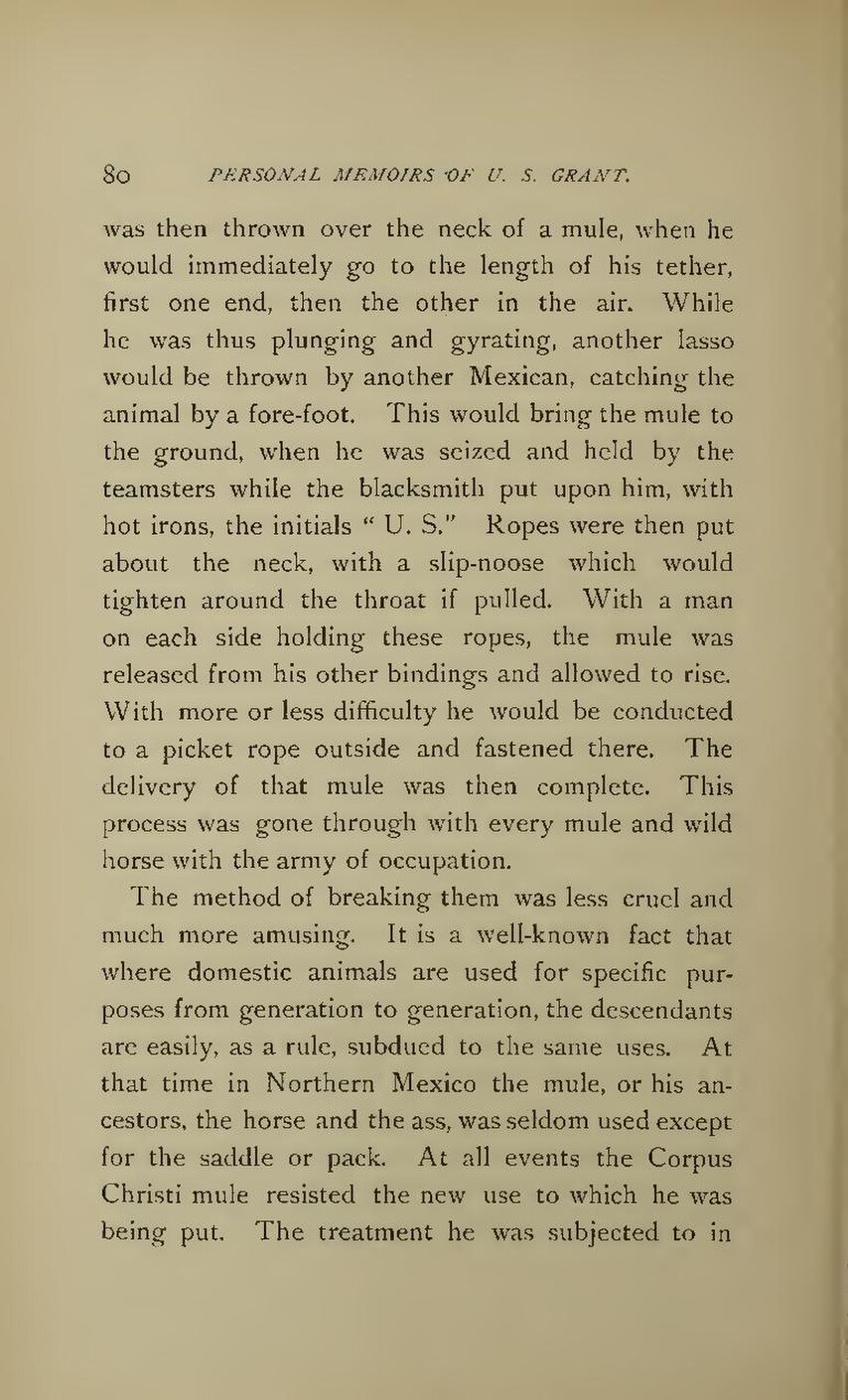was then thrown over the neck of a mule, when he would immediately go to the length of his tether, first one end, then the other in the air. While he was thus plunging and gyrating, another lasso would be thrown by another Mexican, catching the animal by a fore-foot. This would bring the mule to the ground, when he was seized and held by the teamsters while the blacksmith put upon him, with hot irons, the initials “U. S.” Ropes were then put about the neck, with a slipnoose which would tighten around the throat if pulled. With a man on each side holding these ropes, the mule was released from his other bindings and allowed to rise. With more or less difficulty he would be conducted to a picket rope outside and fastened there. The delivery of that mule was then complete. This process was gone through with every mule and wild horse with the army of occupation.
The method of breaking them was less cruel and much more amusing. It is a well-known fact that where domestic animals are used for specific purposes from generation to generation, the descendants are easily, as a rule, subdued to the same uses. At that time in Northern Mexico the mule, or his ancestors, the horse and the ass, was seldom used except for the saddle or pack. At all events the Corpus Christi mule resisted the new use to which he was being put. The treatment he was subjected to in
